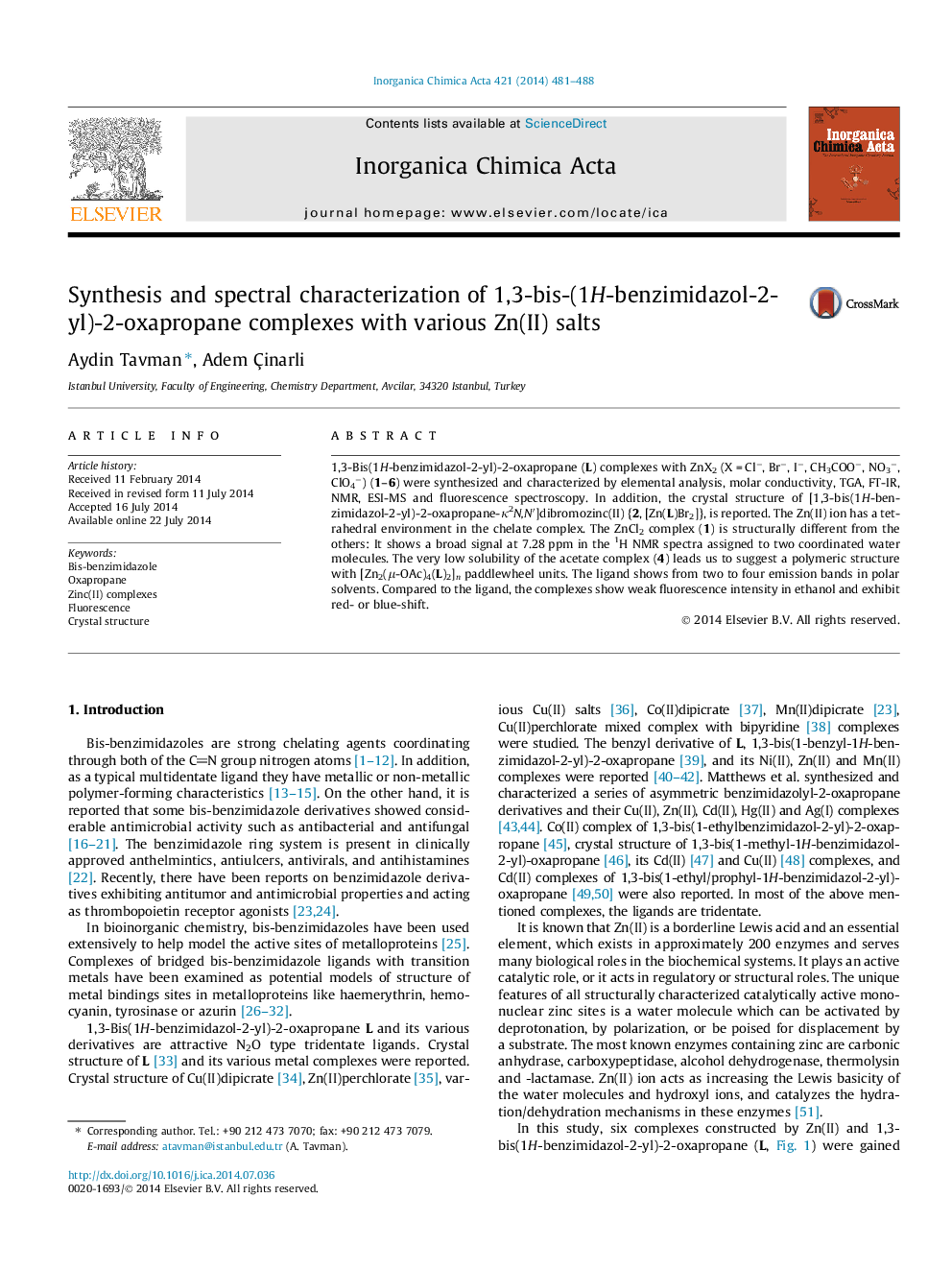| Article ID | Journal | Published Year | Pages | File Type |
|---|---|---|---|---|
| 1308146 | Inorganica Chimica Acta | 2014 | 8 Pages |
•1,3-Bis-(1H-benzimidazol-2-yl)-2-oxapropane ligand gave the complexes with Zn(II) contain eight-membered ring.•Coordinated water molecules were observed in the 1H NMR spectra of [Zn(L)2(H2O)2]Cl2 in DMSO.•The acetato complex exhibits a polymeric structure that it has paddlewheel units [Zn2(OAc)4].•Anion effect was observed especially in the fluorescence spectra of the complexes.
1,3-Bis(1H-benzimidazol-2-yl)-2-oxapropane (L) complexes with ZnX2 (X = Cl−, Br−, I−, CH3COO−, NO3−, ClO4−) (1–6) were synthesized and characterized by elemental analysis, molar conductivity, TGA, FT-IR, NMR, ESI-MS and fluorescence spectroscopy. In addition, the crystal structure of [1,3-bis(1H-benzimidazol-2-yl)-2-oxapropane-κ2N,N′]dibromozinc(II) {2, [Zn(L)Br2]}, is reported. The Zn(II) ion has a tetrahedral environment in the chelate complex. The ZnCl2 complex (1) is structurally different from the others: It shows a broad signal at 7.28 ppm in the 1H NMR spectra assigned to two coordinated water molecules. The very low solubility of the acetate complex (4) leads us to suggest a polymeric structure with [Zn2(μ-OAc)4(L)2]n paddlewheel units. The ligand shows from two to four emission bands in polar solvents. Compared to the ligand, the complexes show weak fluorescence intensity in ethanol and exhibit red- or blue-shift.
Graphical abstract1,3-Bis-(1H-benzimidazol-2-yl)-2-oxapropan (L) complexes with ZnX2 (X = Cl−, Br−, I−, CH3COO−, NO3−, ClO4−) were synthesized and characterized. The crystal structure of [1,3-bis(1H-benzimidazol-2-yl)-2-oxapropane-κ2N,N′]dibromozinc(II) with tetrahedral geometry is reported. Two coordinated water molecules of [Zn(L)2(H2O)2]Cl2 show a broad band at 7.28 ppm in the 1H NMR spectra. The very low solubility of the acetato complex might indicate formation of a coordination polymer that its paddlewheel units [Zn2(OAc)4] might be bridged by the N,N donor ligand. In addition, the fluorescence characteristics of the ligand and the complexes are reported.Figure optionsDownload full-size imageDownload as PowerPoint slide
